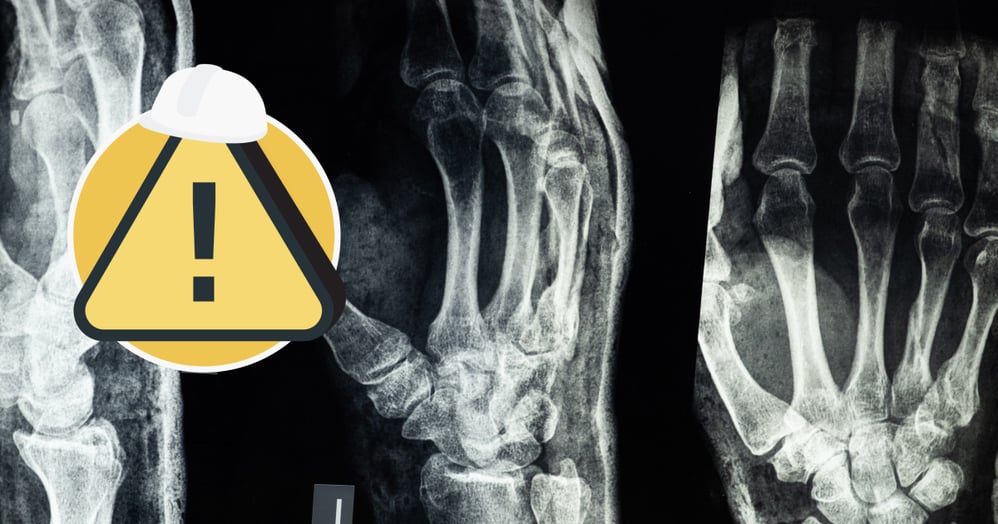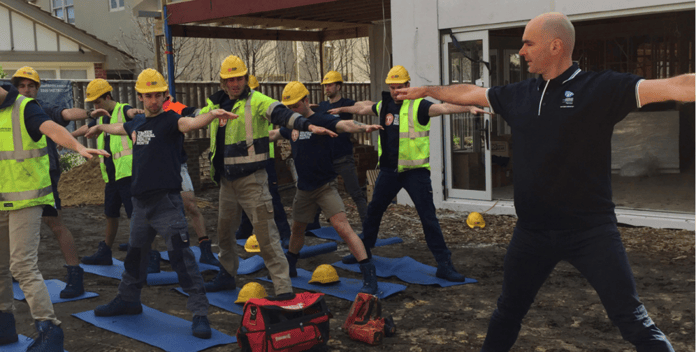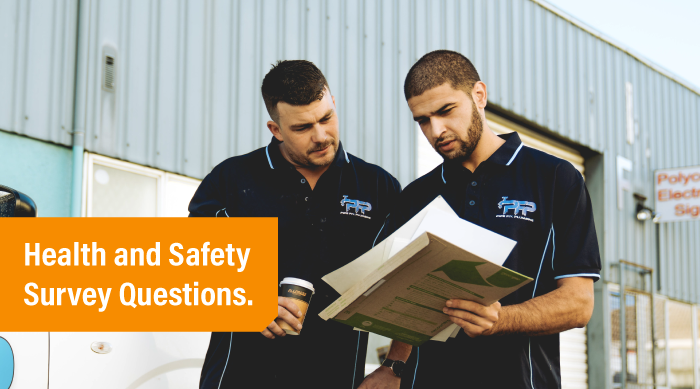Most Common Workplace Injuries for Tradespeople (and how to prevent them)
by Team Tradify, May 19, 2021

Table of Contents
Working in the trades is great. You can be doing something different every day, working in new environments, and staying relatively active — compared to a desk job at least. The trade-off, however, comes in the form of increased risk. Here’s the reality: the trade industry suffers from the highest health and safety issues of any sector.
The most effective way to reduce injuries in the workplace is to get the whole team actively involved in health & safety. To make things easier for you, we've put together a one-page H&S survey that you can get your team to fill out. Find out how effective your current H&S processes are — or if there are gaps that need filling.

Over 700,000 workers in the UK were non-fatally injured in the 2019/20 reporting year, according to HSE — and that’s only the injuries that were reported. Unfortunately, a large portion of these injuries occurred in the trades, despite the increased emphasis on health and safety in these types of jobs. Statistics in other countries show a disturbingly similar trend. Agriculture, construction, electrical and plumbing industries are over-represented in injury statistics around the world.
Aside from the initial painful effects of injuries, there are also roll-on effects to tradespeople and those around them. If you’re off work due to injury you may be earning less, or even nothing at all in some countries. Your own employer is also going to suffer from your absence. If the injury is severe, you could even be off work for months.
So what do you need to watch out for? Below are the most common workplace injuries affecting tradespeople. Keep them in mind next time you’re on the job.
Jump ahead:
1. Strains and sprains while lifting or handling objects
2. Falls, trips and slips
3. Fractures and wounds
4. Diseases
5. Physical assaults and mental health
1. Strains and sprains while lifting or handling objects
If you’ve ever popped a shoulder lifting a wheelbarrow or done your back in while moving heavy tools, you’ll know what we’re talking about. Around 20-30% of all workplace injuries are muscular stress related, with upper and lower back cases accounting for almost half of these.
Strains and sprains happen when workers are required to lift, push, or carry something heavy. Muscles are put under too much stress and injury occurs as a result. Avoid these kinds of injuries by learning how to lift properly. Bend at the knees and lift with the legs, keeping your back as straight as you can.

Aussie tradies, watch your backs! 90% of serious claims from all trade occupations in Australia are a direct result of injuries and musculoskeletal disorders, a category that covers traumatic joint, ligament, muscle and tendon injuries.
2. Falls, trips and slips
We don’t like to throw the words ‘clumsy’ or ‘careless’ around, but falls, trips and slips account for about 20% of all trade industry injuries. Ankles, backs, knees and shoulders suffer the most, while a repetitive strain is a big cause of Lateral Epicondylalgia (LE), aka tennis elbow.
Prevent these types of injuries at your workplace by minimising or eliminating job hazards. Look for hazards such as:
- Unmarked changes in floor levels
- Wet floors
- Obstructions and tripping hazards
- Damaged flooring
- Poor lighting

3. Fractures and wounds
Tradespeople often work with sharp objects and heavy power tools. A few cuts and bruises come with the territory, but often these accidents are often only millimetres away from becoming serious lacerations or even broken bones.
Fractures are also often caused by heavy machinery and falling objects. Crushing injuries are common when using cranes, diggers, or loaders to move large objects. But even small objects can cause serious injury — a hammer knocked off some scaffolding can easily fracture bone.
Be careful when working with machinery, moving large objects, or operating under those working at heights. Wearing the appropriate personal protective equipment (PPE) will help minimise the risk of fractures and wounds.
4. Diseases
Believe it or not, diseases are also a big cause of tradie injuries across all sectors. According to WorkSafe, a worker is 15x more likely to die from a work-related disease, than from a workplace accident.
Diseases that cause injury can include:
- Digestive system diseases
- Nervous system/sense organ diseases
- Skin/subcutaneous tissue diseases
- Respiratory system diseases
- Circulatory system diseases
- Infectious and parasitic diseases
Prevent injuries caused by diseases by taking appropriate measures when working in potentially contaminated areas. Maintain proper hygiene and stay home if you’re sick in case you’re contagious. Wear sunblock and a hat to protect yourself from skin cancers.
5. Physical assaults and mental health
9% of workplace injuries in the UK were caused by acts of violence, according to HSE. That’s almost 300,000 physical assaults. We’ve grouped physical assault and mental health together in this article because if someone attacks a co-worker, they clearly have other problems that need addressing.
Violence in the workplace can range from physical assault to intimidation and threatening behaviour. In situations regarding workplace violence, both the victim and the perpetrator are likely in need of help. A positive mental health culture in the workplace is bound to lower rates of physical violence.
Over the years tradespeople have endured what the media refers to as a ‘suicide scourge’. Rates of suicide are higher than average in the trades, across all regions. It’s been brought on by the combination of backbreaking physical labour and a ‘macho’ culture that tends to slam signs of weakness and vulnerability. There’s no denying there’s a stigma surrounding mental health, particularly within the trades industries.
It’s early days, but there are signs that mental health culture in the trades is changing. Ask your mates how they’re doing when you see them at work today. We want to do our bit to break down barriers, raise awareness and help tradies around the world stay healthy — physically and mentally.
Check out this podcast episode with Ed from TradeMutt, an Australian workwear brand providing professional mental health support to tradies, truckies, and blue-collar workers.
Mental health support for tradespeople
If you're going through a tough time mentally, don't keep it to yourself. If you need someone to talk to, use the free resources below to find professional help:
UK - Find a local NHS mental health helpline
AU - MATES in Construction
NZ - MATES in Construction
Start your 14-day free trial today. No credit card required. No pressure. Or take a look at Tradify in action during one of our weekly 30-min live walkthrough.
Find out how your staff feel about health & safety by downloading our free Health & Safety Survey Questions!
Related articles

How To Keep Your Trade Business Running When You’re on Holiday

Digital Marketing for Small Businesses + Free Marketing Plan

5 Great Gift Ideas For Tradies
Give Tradify a go for free!
Save 10+ hours/week on business admin with the highest-rated job management software for tradespeople.
With free one-on-one training and phone support, it's never been easier to get started.



